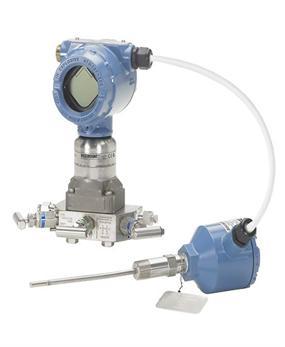Industrial operations are majorly dependent on different parameters, which require, regular monitoring, and control. Multivariable transmitters are one of the most used instruments for monitoring variables in various industrial processes. The multivariable transmitters are the transmitters that measure multiple parameters. Popular multivariable transmitters like Rosemount transmitter 3051 are designed to measure mass flow, differential pressure, temperature, and absolute pressure. These types of transmitters are utilized in a vast range of industrial applications such as water transport systems, marine operations, thermal systems, gas transport, etc. However, in order to implement these transmitters in your industrial applications, you must know what it exactly is and how does it work. This post discusses what a multivariable transmitter is and its working principle. The multivariable transmitters are devices specifically designed to measure three process parameters and calculate the flow during an active industrial operation. These types of transmitters offer static pressure, differential pressure, and temperature measurement along with a flow calculator. It features local flow indicators to calculate accurate mass flow reading. However, the mass flow calculations are based on the earlier measurements of static pressure, differential pressure, and temperature. These transmitters are active parts of industrial applications that require instant or active measurements of temperature fluctuations, volumetric flow, totalized flow, energy variations, etc. Now, let us discuss how the Rosemount multivariable transmitter work. The following pointers will help you understand the overall working of a Rosemount multivariable transmitter. This way, the Rosemount 3051 multivariable transmitters offer 4 different values at any given point in time. To take advantage of these advanced transmitters, it is important to purchase them from a trusted supplier, also the proper installation and maintenance services must be sourced. The Transmitter Shop is a prominent supplier of high-quality, authentic, Rosemount multivariable transmitters including Rosemount 3051s transmitters and other process control devices. The Texas-based company is recognized for its high-quality transmitter supply along with installation, maintenance, and calibration services to their clients. Electric Vehicle Industry UV Adhesives UV photosensitive adhesive,UV curable adhesive,New energy electric vehicle UV adhesive, UV adhesive bonding for automotive LED headlights,adhesive glue for electronics Dongguan Shuangzhan Industrial Co.,Ltd , https://www.lingwogroup.comA Brief Discussion on Multivariable Transmitters

Working Principle of Rosemount Multivariable Transmitters
Related Posts
Electric vehicle industry UV adhesives is a one-component,UV ultraviolet curing adhesive.Electric vehicle UV adhesives has the characteristics of medium viscosity, fast curing speed and good weather resistance.Electric vehicle UV adhesives is mainly used in bonding battery boxes,bonding battery cells to casings,bonding and potting sensors,bonding magnets in electric motors ect.
Â
Characteristics of UV adhesive for electric vehicles:
1.Fast curing speed: UV glue can quickly solidify within a few seconds to tens of seconds under ultraviolet irradiation, which improves production efficiency.
Â
2.High bonding strength: UV glue has strong bonding ability to a variety of materials, such as plastics, metals, glass, etc. It can firmly bond different parts of the car and enhance the stability of the car.
Â
3.Good flexibility: After UV glue is cured, the glue layer has a certain degree of flexibility and can withstand the vibration and impact generated by electric vehicles during driving, and is not prone to breakage or degumming.
Â
4.Excellent environmental protection and safety performance: UV glue does not contain organic solvents and meets environmental protection requirements.
Â
Â